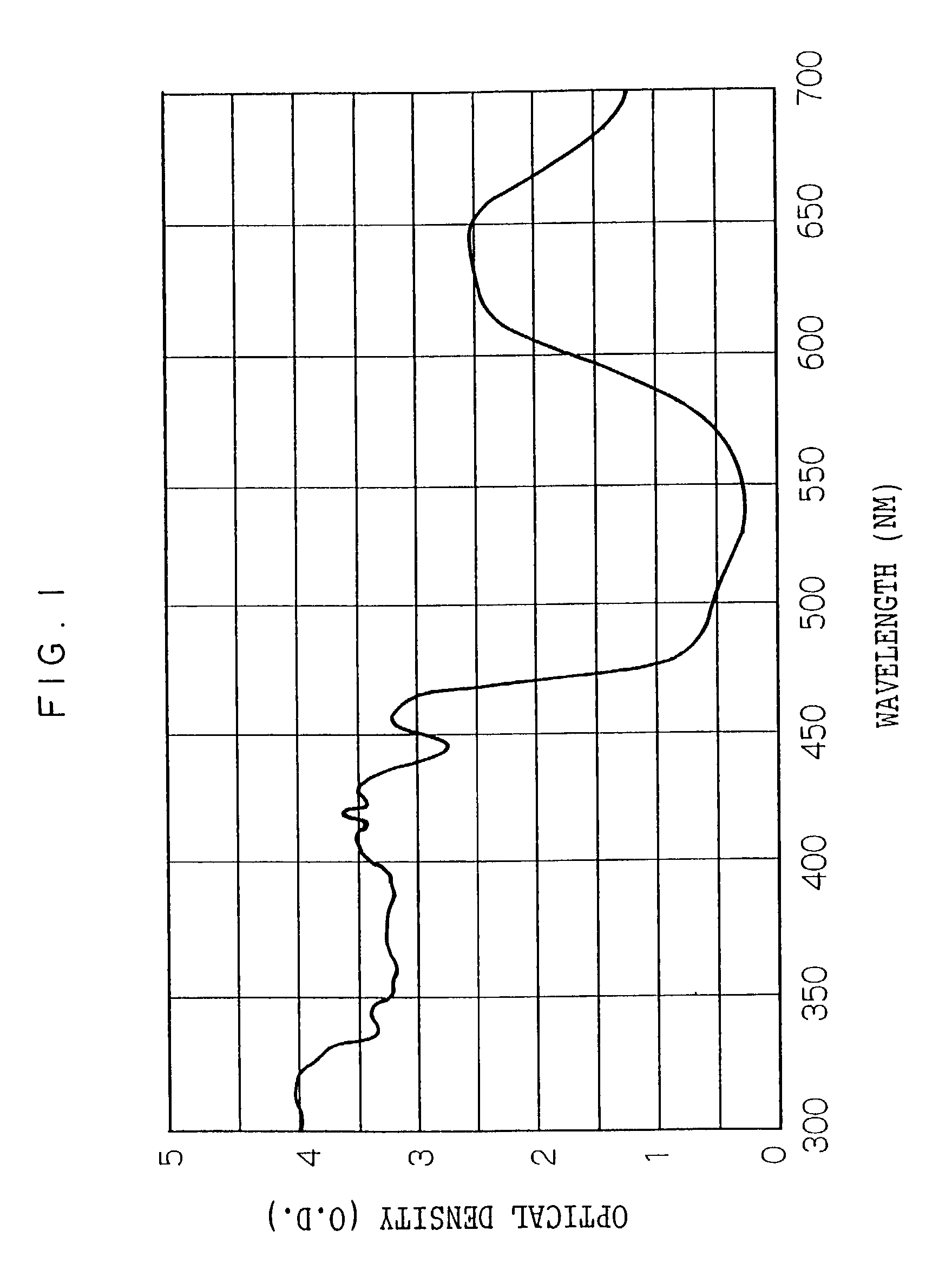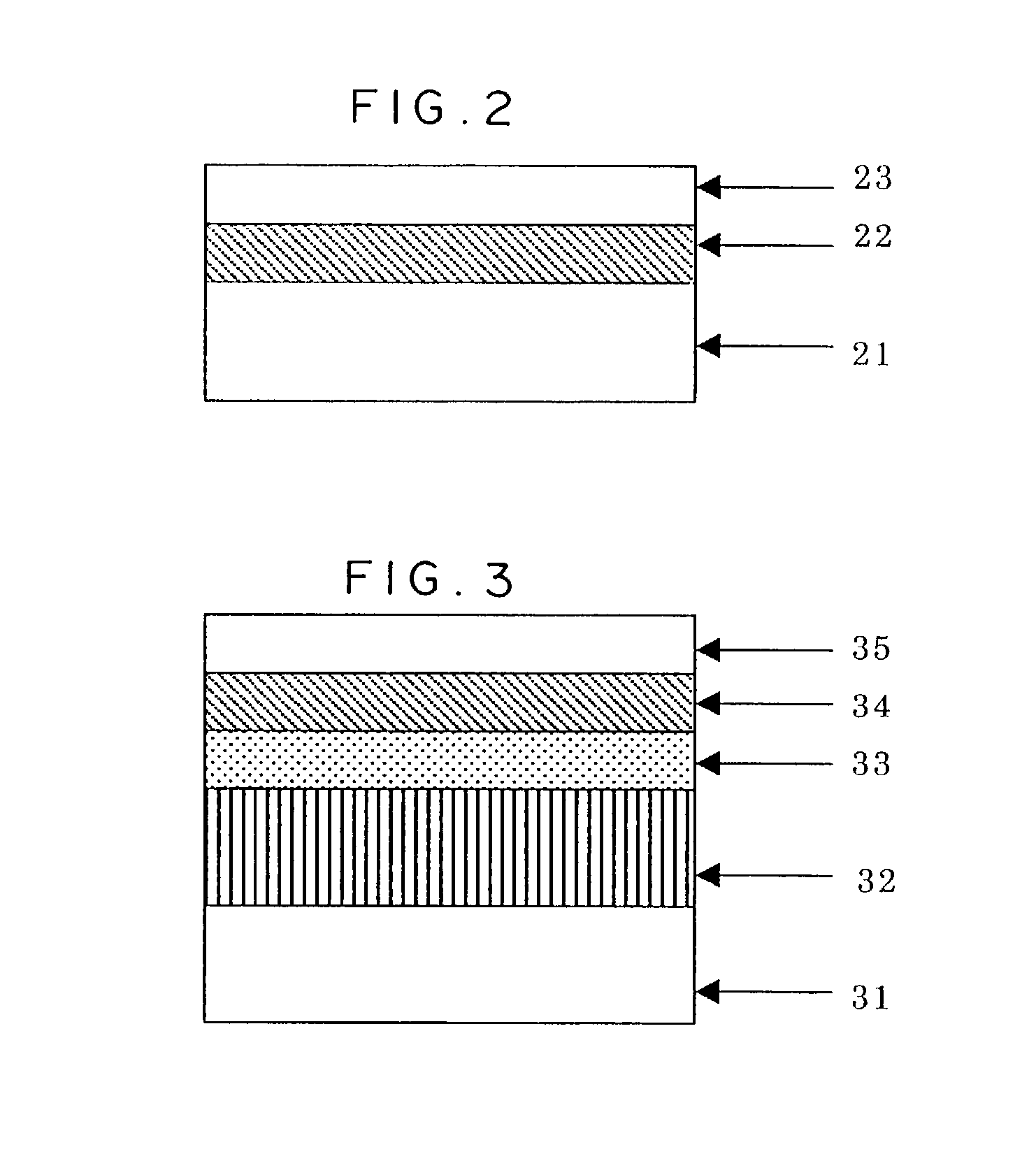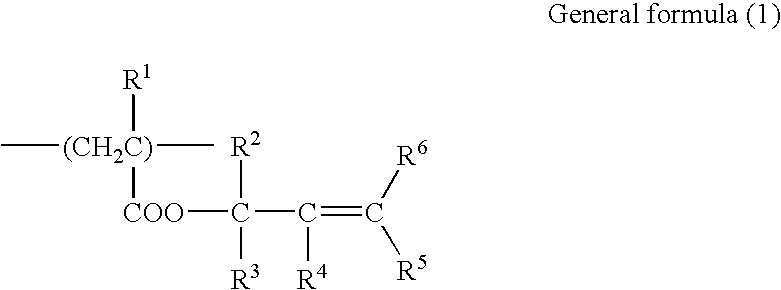Photosensitive resin composition, transfer material, image forming method, color filter and producing method thereof and photomask and producing method thereof
- Summary
- Abstract
- Description
- Claims
- Application Information
AI Technical Summary
Benefits of technology
Problems solved by technology
Method used
Image
Examples
synthesis example 1
[0185]180 parts of 1-methoxy-2-acetoxy propane were charged in a reaction vessel and heated under a nitrogen flow so that the internal temperature of the vessel was 70° C. Then a solution in which 17.1 parts of methacrylic acid, 42.9 parts of allyl methacrylate, 30.0 parts of benzyl methacrylate (composition ratio of these methacrylic acid and esters thereof was 28:48:24 in molar ratio), 2.87 parts of dodecylmercaptane and 3.52 parts of V-65 (2,2′-azobis-(2,4′-dimethylvaleronitrile), manufactured by Wako Pure Chemical Co.) were dissolved in 180 parts of 1-methoxy-2-acetoxypropane was dropwise added into the vessel over a period of 2.5 hours. The mixture was agitated further for 2 hours under heating at 70° C. to obtain a methacrylic acid / allyl methacrylate / benzyl methacrylate terpolymer (terpolymer 1). The weight-average molecular weight of the terpolymer was 33,000 (converted as polystyrene).
synthesis example 2
[0186]803 parts of 1-methoxy-2-acetoxypropane were charged in a reaction vessel and heated under a nitrogen flow so that the internal temperature of the vessel was 70° C. Then a solution in which 54.0 parts of methacrylic acid, 135.6 parts of allyl methacrylate, 90.4 parts of cyclohexyl methacrylate (composition ratio of these methacrylic acid and esters thereof was 28:48:24 in molar ratio), 4.53 parts of dodecylmercaptane and 11.1 parts of V-65 (2,2′-azobis-(2,4′-dimethylvaleronitrile), manufactured by Wako Pure Chemical Co.) were dissolved in 803 parts of 1-methoxy-2-acetoxypropane was dropwise added into the vessel over a period of 2.5 hours. The mixture was agitated further for 2 hours under heating at 70° C. to obtain a methacrylic acid / allyl methacrylate / cyclohexyl methacrylate terpolymer (terpolymer 2). The weight-average molecular weight of the terpolymer was 36,000 (converted as polystyrene).
synthesis example 3
[0187]427.5 parts of 1-methoxy-2-propanol were charged in a reaction vessel and heated under a nitrogen flow so that the internal temperature of the vessel was 70° C. Then a solution in which 18.5 parts of methacrylic acid, 46.5 parts of allyl methacrylate, 29.9 parts of benzyl acrylate (composition ratio of these methacrylic acid and esters was 28:48:24 in molar ratio), and 3.82 parts of V-65 (2,2′-azobis-(2,4′-dimethylvaleronitrile), manufactured by Wako Pure Chemical Co.) were dissolved in 427.5 parts of 1-methoxy-2-propanol was dropwise added into the vessel over a period of 2.5 hours. The mixture was agitated further for 2 hours under heating at 70° C. The obtained reaction liquid was poured into 5000 parts of water, and the resulting solid was separated by filtration and dried under vacuum to obtain a methacrylic acid / allyl methacrylate / benzyl acrylate terpolymer (terpolymer 3). The weight-average molecular weight of the terpolymer was 36,000 (converted as polystyrene).
PUM
| Property | Measurement | Unit |
|---|---|---|
| Temperature | aaaaa | aaaaa |
| Angle | aaaaa | aaaaa |
| Temperature | aaaaa | aaaaa |
Abstract
Description
Claims
Application Information
 Login to View More
Login to View More - R&D
- Intellectual Property
- Life Sciences
- Materials
- Tech Scout
- Unparalleled Data Quality
- Higher Quality Content
- 60% Fewer Hallucinations
Browse by: Latest US Patents, China's latest patents, Technical Efficacy Thesaurus, Application Domain, Technology Topic, Popular Technical Reports.
© 2025 PatSnap. All rights reserved.Legal|Privacy policy|Modern Slavery Act Transparency Statement|Sitemap|About US| Contact US: help@patsnap.com



